Lawns have been the centerpiece of American landscapes for a very long time and especially in the 20th century. Now, with the increasing effects of global climate disruption, it’s essential to rethink and redesign lawns and landscapes to learn how to help mitigate and repair the damage. Fortunately, we can maintain the beauty of our regional landscapes and improve ecosystems by planting enhanced habitat for pollinators, beneficial insects, and songbirds with xeric choices.
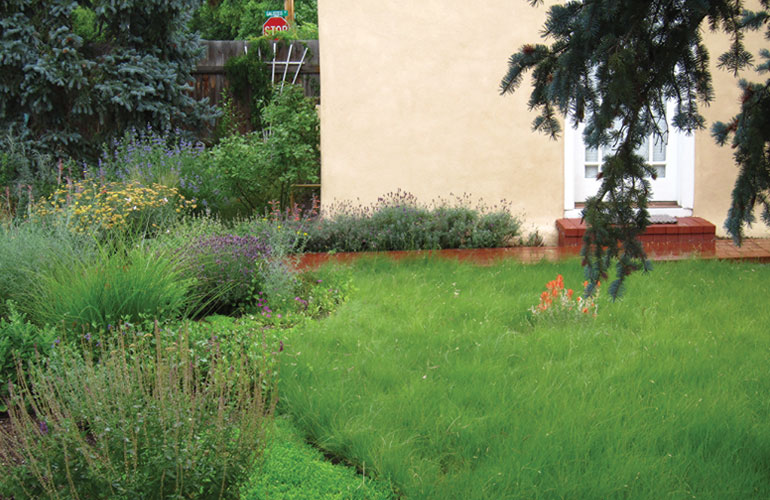
Over the past 30 years, I have been a proponent of xeriscaping, otherwise known as low-water use landscaping, a concept developed for the arid Western U.S. (Colorado specifically) to reduce landscape water use and conserve limited water resources. But these principles go beyond just the goal of saving water. They should be used to help guide all aspects of plant selection and landscaping to move toward a more sustainable and environmentally friendly result. The use of native grasses and other low water turf varieties, which can greatly cut water use and reduce the carbon footprint involved in lawn care, can be a large part of the xeriscaping equation across the U.S.
The Eight Principles
The following principles of xeriscaping are my distillation of the original tenets created in the early 1980s by the Denver Water Board. They are a result of my experiences propagating, growing, and landscaping with xeric plants from my retail nursery in the high desert of northern New Mexico. But xeriscaping has important applications in all parts of the U.S., even as it relates to reducing landscape water use.
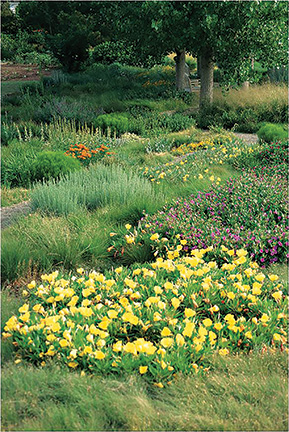
1. Planning & Design. Use a wide variety of plant types and plant species to maximize diversity. Create habitat for birds with an emphasis on nectar-rich plants for pollinators. Design for low maintenance.
2. Create Practical Lawn Areas. Diversify a landscape by using less space for lawns and more for flowers. Care for the lawn organically. Use herbaceous groundcovers or native sedges where it’s too shady for grass. In more arid climates, plant xeric native/Old World lawn grasses for drought tolerance and low water use.
3. Plant Regionally Suitable Plants. Use a mix of native and Old World plants (70-80% native / 20-30% Old World) best suited to your soil, climate, and growing conditions. (Old World plants are species and their cultivars that are native to the Eastern hemisphere—Europe, Asia and Africa—and are planted here in North America.)
4. Improve & Maintain Soil Organically. Your goal is a healthy, living soil by using organic composts and fertilizers, not petrochemical fertilizers, insecticides, fungicides, and herbicides.
5. Mulching. In arid climates, use mulches to save water, improve soil fertility, reduce weeding, and improve transplanting success. Groundcovers are excellent as living mulch, especially in moister climates where natural mulch materials can facilitate slug problems.
6. Irrigate Efficiently. Use drip irrigation, soaker hoses for flowerbeds. Water more deeply and less frequently for all plants.
7. Water Harvesting. Direct water from roofs and hard surfaces onto your landscape, not the street. Recharge your aquifer. Let harvested water help irrigate your landscape in arid climates. Use rain gardens in wetter climates.
8. Appropriate Maintenance. Use organic and natural products wherever possible. Fertilize in the fall. Leave perennials and ornamental grasses standing over the winter to protect overwintering beneficial insects. Check and repair irrigation systems each spring.
Xeric Turf Grasses
Today, there are many low-water choices for turf grass. From native grass populations of the Intermountain West and the Western Great Plains, many grass species and cultivars have been developed and are now being used for lawns and more informal lawn-like short grass prairie. Some of the best native lawn grasses for regions with less than 25″ inches of annual precipitation include seed grown blue grama (Bouteloua gracilis) and cutting grown female cultivars like Legacy® buffalo grass (Bouteloua dactyloides). Other low water grasses are of Old World origins such as the sterile, cold hardy Dog Tuff™ Bermuda grass (Cynodon x ‘PWIN04S’) and dwarf tall fescue blends. These Old World grasses are a better choice for heavy foot traffic play areas due to their greater tolerance and softer feel under foot. These Western adapted lawn grasses not only require significantly less water than traditional Kentucky bluegrass (Poa pratensis), but they look good with much less frequent mowing (reducing mower gas use) and generate a much smaller volume of clippings. These grasses are also generally untroubled by insect pests and fungal diseases and need much less fertilizer.
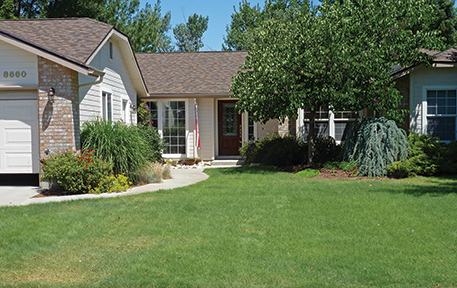
As precipitation increases in the Eastern half of the U.S., the need for water saving xeric lawn grass selections is greatly diminished. Native dryland grasses like blue grama and most buffalo grass selections will not be happy with the moist conditions in the Eastern U.S. To reduce the frequency of mowing and supplemental irrigation, consider planting moisture tolerant Prestige™ buffalo grass, sterile Bermuda grass cultivars like Latitude36™ or Dog Tuff™, and dwarf tall fescue lawn seed mixes.
Regardless of where lawns are planted, the principles of xeriscaping suggest that switching to an organic lawn care regime will help to greatly reduce the carbon footprint needed for lawn maintenance and will improve the water holding capacity of the soil to help in times of scant rainfall. The continued use of soil-building fertilizers, instead of high nitrogen chemical formulations, will also slow top growth, requiring less frequent mowing.
By combining the use of these grasses with organic lawn care materials and methods, we are able to restore the soil’s complex microbial and fungal ecosystem. Healthy living soil regains its ability to sequester CO2 and is nature’s most efficient and long-term carbon vault. Lawns grown naturally without chemicals are no longer sources of soluble nitrogen and phosphorous which percolate into the groundwater or run-off into surface water like ponds and streams. Instead, the soil and lawn grass roots can act as natural filters to clean water that moves deep into aquifers, just like the prairies or forests that came before them.
Grass & Wildflower Meadows
To further reduce water usage and environmental impact, there has also been a lot of interest in planting meadows or prairie in place of traditional monoculture lawns—especially when the areas are not used for recreation. Meadows and prairie are a supportive environment for pollinators and beneficial insects and provide habitat for all types of birds, especially when bordered by forests or hedgerows. Where permitted by HOAs and commercial office park covenants, regionally adapted native meadow and prairie grasses are ideal choices for these spaces. They can also be incredibly attractive.
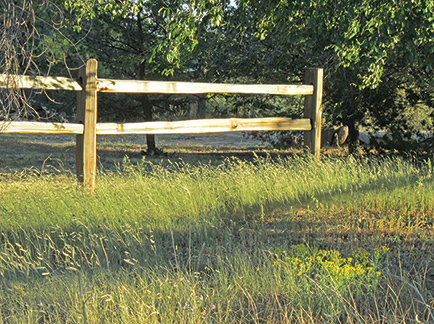
In the Western half of the U.S., buffalo grass and blue grama grass are well suited for use in meadows and can be beautifully inter-planted with native prairie wildflowers. If moderate height is not a restriction, we use other native grass species like sideoats grama (Bouteloua curtipendula), Indian ricegrass (Achnatherum hymenoides), galleta grass (Pleuraphis jamesii), little bluestem (Schizachyrium scoparium) and various muhly grasses (Muhlenbergia species) which can be sown or plugged into blue grama and buffalo grass. To add color and nectar sources, native perennials can also be planted into the grasses. Good choices include poppy mallow (Callirhoe involucrata), evening primrose (Oenothera macrocarpa), prairie skullcap (Scutellaria resinosa), and prairie zinnia (Zinnia grandiflora). Many other forbs of prairie origin provide long seasons of beautiful color and nectar for pollinating insects.
In the Eastern half of the country, tufted hairgrass (Deschampsia cespitosa), sideoats grama (Bouteloua curtipendula), purple lovegrass (Eragrostis spectabilis), and prairie dropseed (Sporobolus heterolepis) are all good generalist species well adapted to a wide range of lawn sites. Many species of native wildflowers like butterfly weed (Asclepias), Eastern red columbine (Aquilegia canadensis), Joe Pye weed (Eutrochium purpureum), and blazing star (Liatris) can be mixed in to provide both improved habitat and beauty.
Inter-planting Bulbs
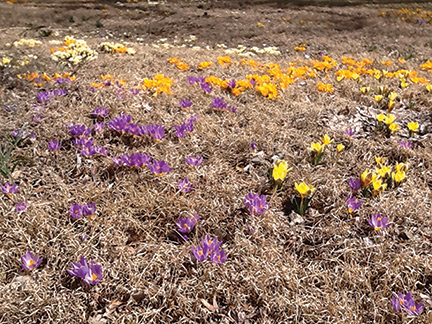
Another way to incorporate low-water choices is an exciting concept of European origin which was adapted to Western growing conditions by folks at the Denver Botanic Garden: inter-planting flowering Old World bulbs into grama and buffalo grass.
These native grasses are excellent hosts in which to grow low growing, naturalizing bulbs like crocus, miniature iris, and wildflower tulips. The bulbs provide early spring beauty for us and crucial nectar for hungry honeybees coming out of dormancy. The bulbs will re-seed themselves and naturalize over the years to form carpets of eye-catching colors. In late spring, as the bulbs go dormant, the grama or buffalo grass will start to green up, creating a perfect transition from spring into summer. Meadows in all regions can be planted with naturalizing bulbs and not be limited by their height in flower since the overwintered meadow grasses will be much taller than buffalo or grama lawns.
 Salman, Founder and Chief Horticulturist at High Country Gardens, has spent over 30 years in pursuit of better plants for eco-friendly landscapes. He is a recognized expert in waterwise gardening and xeriscaping and a sought-after speaker on these subjects. A distinguished recipient of the American Horticultural Society (AHS) 2008 Great American Gardeners Award, he also has a series of planting and informational videos at www.highcountrygardens.com. He also contributes to the High Country Gardens Gardening Blog as well as his personal blog for his company, Waterwise Gardening. High Country Gardens has won 9 out of 9 consecutive awards for best new plant introduction from the Direct Gardening Association.
Salman, Founder and Chief Horticulturist at High Country Gardens, has spent over 30 years in pursuit of better plants for eco-friendly landscapes. He is a recognized expert in waterwise gardening and xeriscaping and a sought-after speaker on these subjects. A distinguished recipient of the American Horticultural Society (AHS) 2008 Great American Gardeners Award, he also has a series of planting and informational videos at www.highcountrygardens.com. He also contributes to the High Country Gardens Gardening Blog as well as his personal blog for his company, Waterwise Gardening. High Country Gardens has won 9 out of 9 consecutive awards for best new plant introduction from the Direct Gardening Association.
Do you have a comment? Share your thoughts in the Comments section below, or send an e-mail to the Editor at acosgrove@groupc.com.











![[VIDEO] Dickies®: Discover Workwear That’s Anything But Uniform](https://turfmagazine.com/wp-content/uploads/2023/06/1647663814-4b1a2a7742790a9b1e97a3b963477850192e1d6a9dfba9b07214a77bae25d6e3-d-218x150.jpg)




























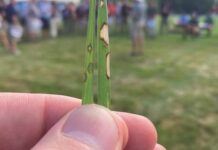

![[VIDEO] Dickies®: Discover Workwear That’s Anything But Uniform](https://turfmagazine.com/wp-content/uploads/2023/06/1647663814-4b1a2a7742790a9b1e97a3b963477850192e1d6a9dfba9b07214a77bae25d6e3-d-324x160.jpg)